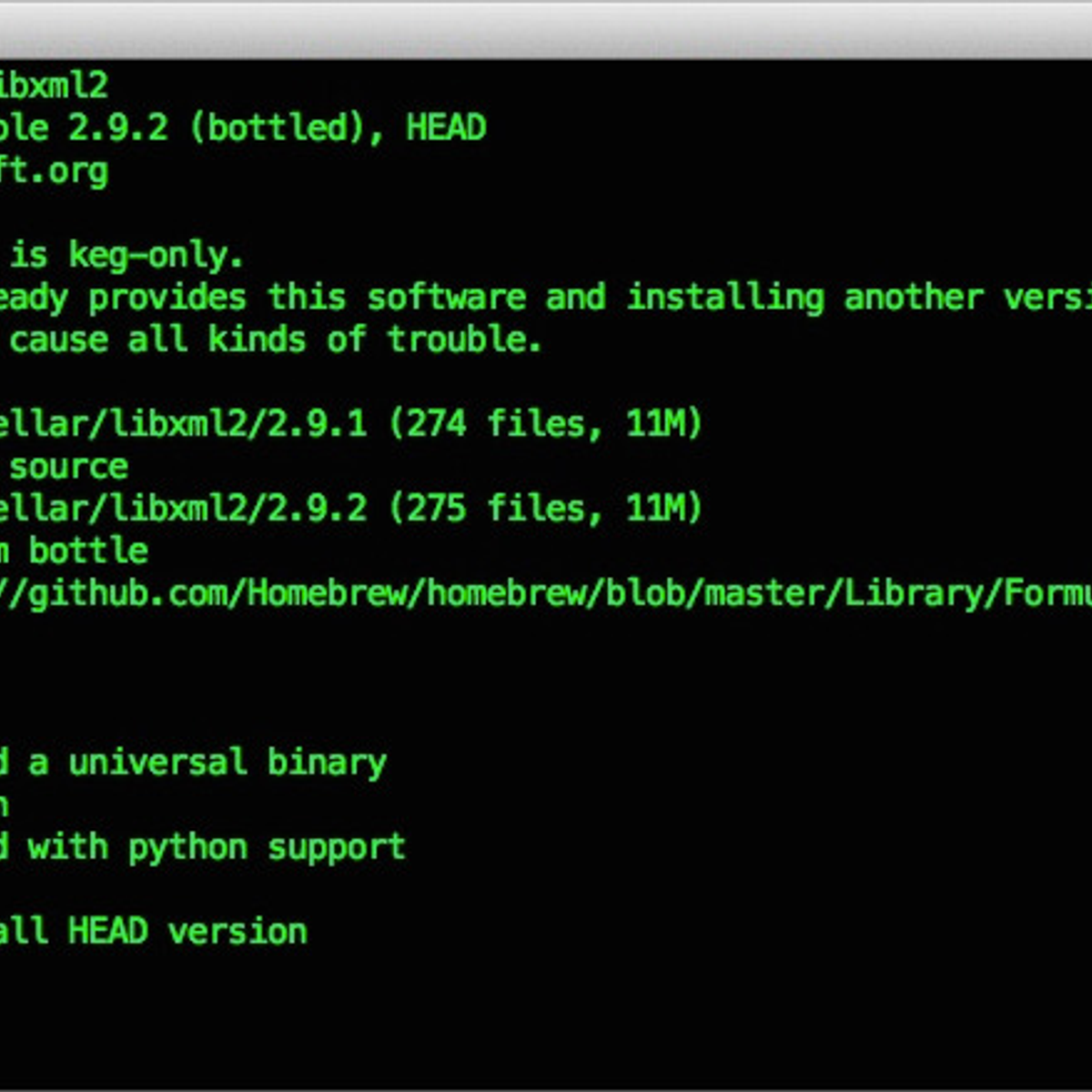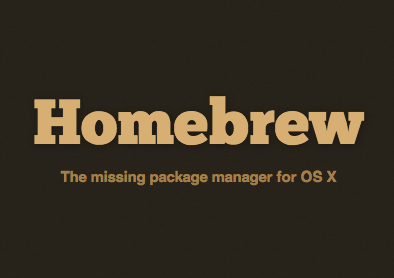Mac Os X Homebrew Python. Homebrew For Mac


I would use You can install it: $ brew install pyenv To enable pyenv in your Bash shell, you need to run: $ eval '$(pyenv init -)' To do this automatically for Bash upon startup, add that line to your /.bashprofile. 1 Usage: Once you have installed pyenv and activated it, you can install different versions of python and choose which one you can use. Example: $ pyenv install 2.7.5 You can check the versions you have installed with: $ pyenv versions And you can switch between python versions with the command: $ pyenv global 3.3.1 Also you can set a python version for the current directory with: $ pyenv local 3.5.2 You can check by running python -version: $ python -version Python 3.5.2 1 Homebrew used to instruct you to do this upon installation of pyenv, but. For Zsh and other shells, the precise steps may be different. You can have both versions installed at the same time. For Homebrew =1.5.0: Since 1st March 2018 the python formula will be upgraded to Python 3.x, while a new python@2 formula will be added for Python 2.7, specifically. For older Homebrew: For Python 2.x: brew install python For Python 3.x: brew install python3 Now, you will have both the versions installed in your machine.

When you want to use version 2, use the python executable. When you want to use version 3, use the python3 executable. Currently Homebrew provides two different formulas for Python 2 and 3. Brew install python installs python3, and brew install python@2 installs python2.
More details in Homebrew docs: If you currently have 2.x installed via Homebrew, Homebrew will give you a message such as: Error: python 2.7.14 is already installed To upgrade to 3.6.5, run `brew upgrade python` If you run: brew upgrade python you should be able to do: python -version and python3 -version To see what versions of Python 2.x and 3.x installed. There are ways to use both, but the simplest solution today is to use. Pyenv allows easy switching between versions. Ballad of asdf Once upon a time there was a programming language There were many versions of it So people wrote a version manager for it To switch between versions for projects Different, old, new.
Mac Os X Homebrew Python Homebrew For Macports
Then there came more programming languages So there came more version managers And many commands for them I installed a lot of them I learnt a lot of commands Then I said, just one more version manager Which I will write instead So, there came another version manager asdf version manager - A version manager so extendable for which anyone can create a plugin To support their favourite language No more installing more version managers Or learning more commands.
I also won't cover mobil GPUs, uncommon variants or low-end office computer cards. AMD product naming convention Before starting, it is noteworthy that AMD has created a lot of confusion in the last years with their rebadging policy: The three latest GPU generation (by name: HD 7000 series, Rx 200 series and Rx 300 series) each contain specific GPUs with different chip architectures, thus using different drivers resulting in totally different OS X compatibility. Amd e300 apu driver for mac. I'll focus on new GPUs (HD 7000 and following) leaving out everything older than HD 5000, since most of those cards have already been dropped in OS X due to the lack of 64bit drivers.